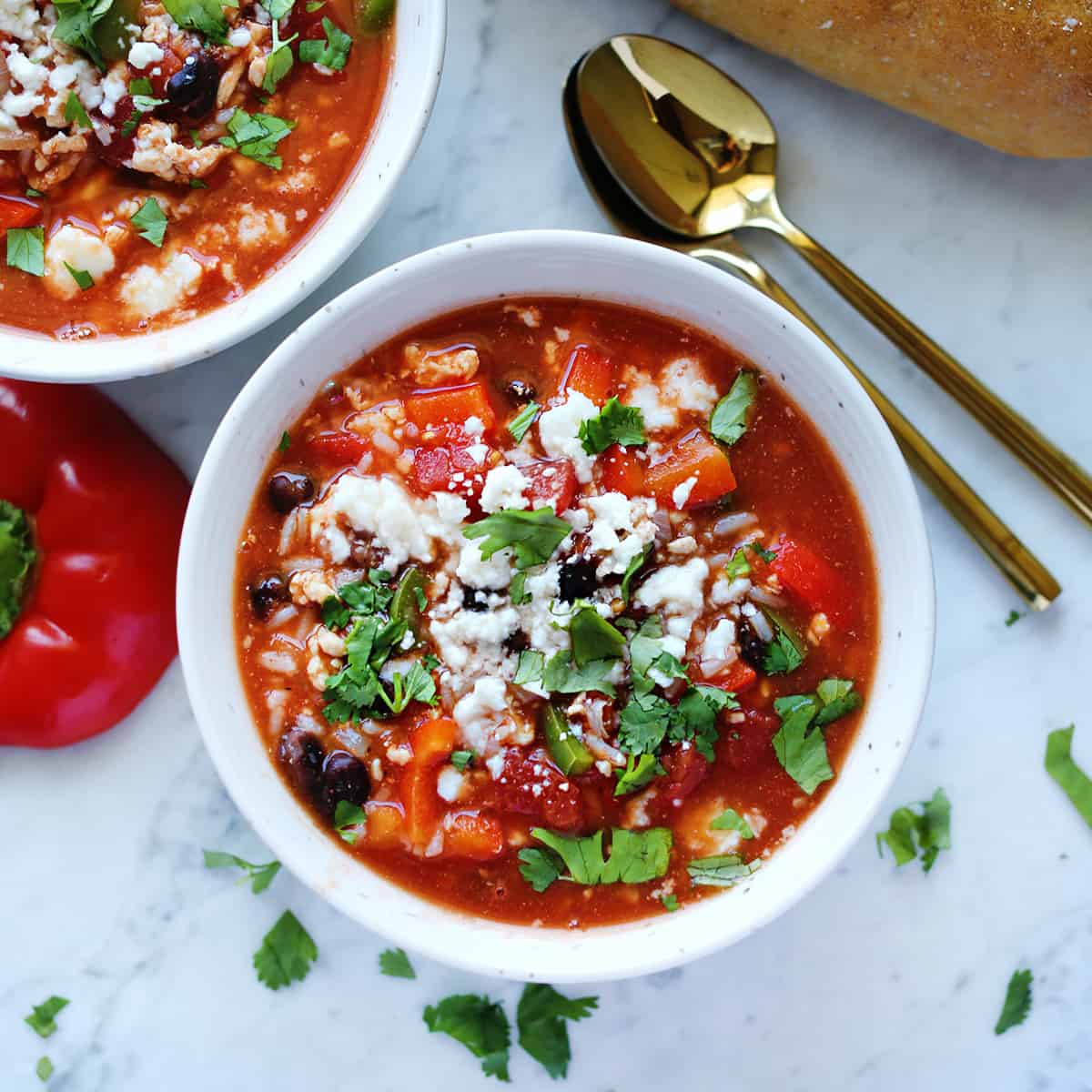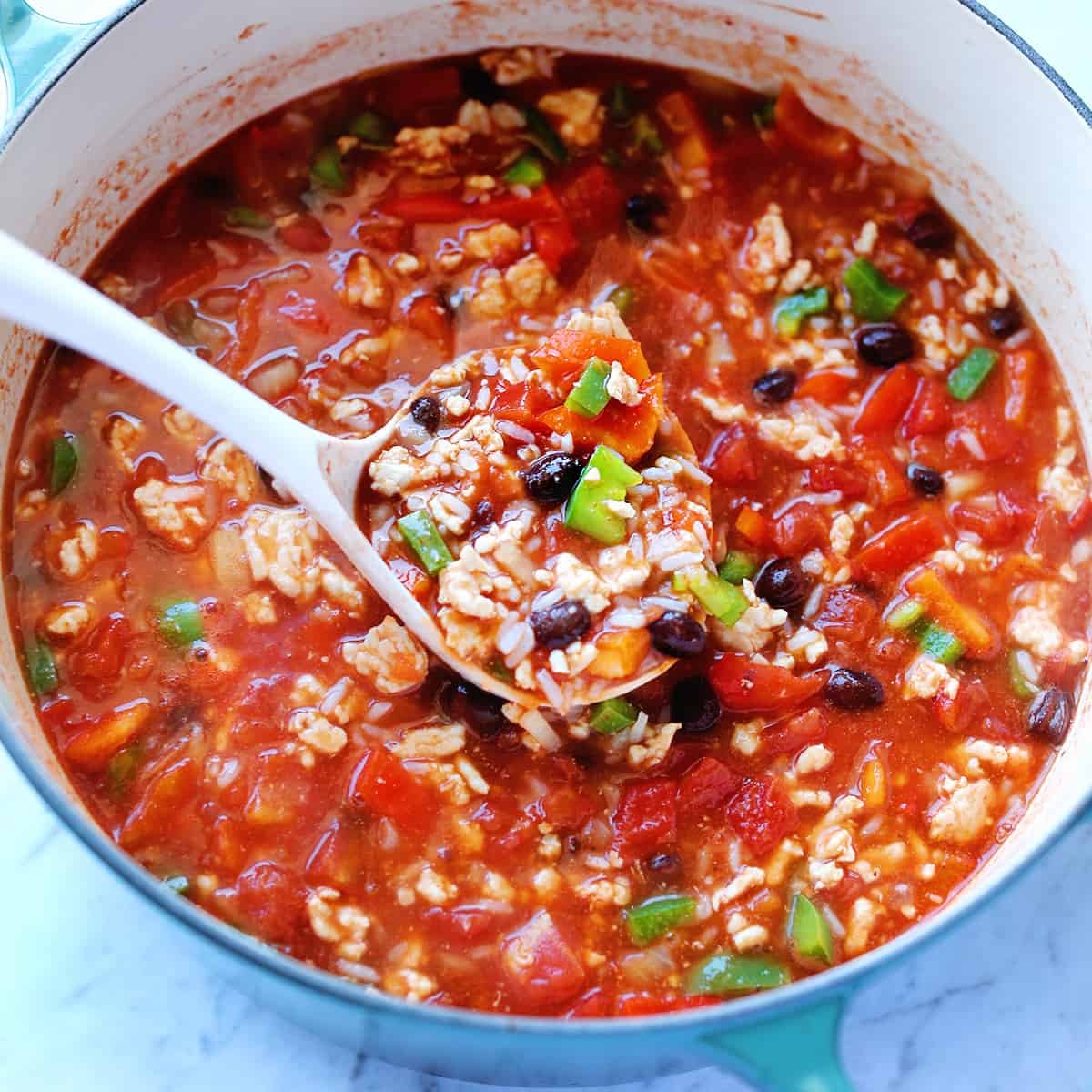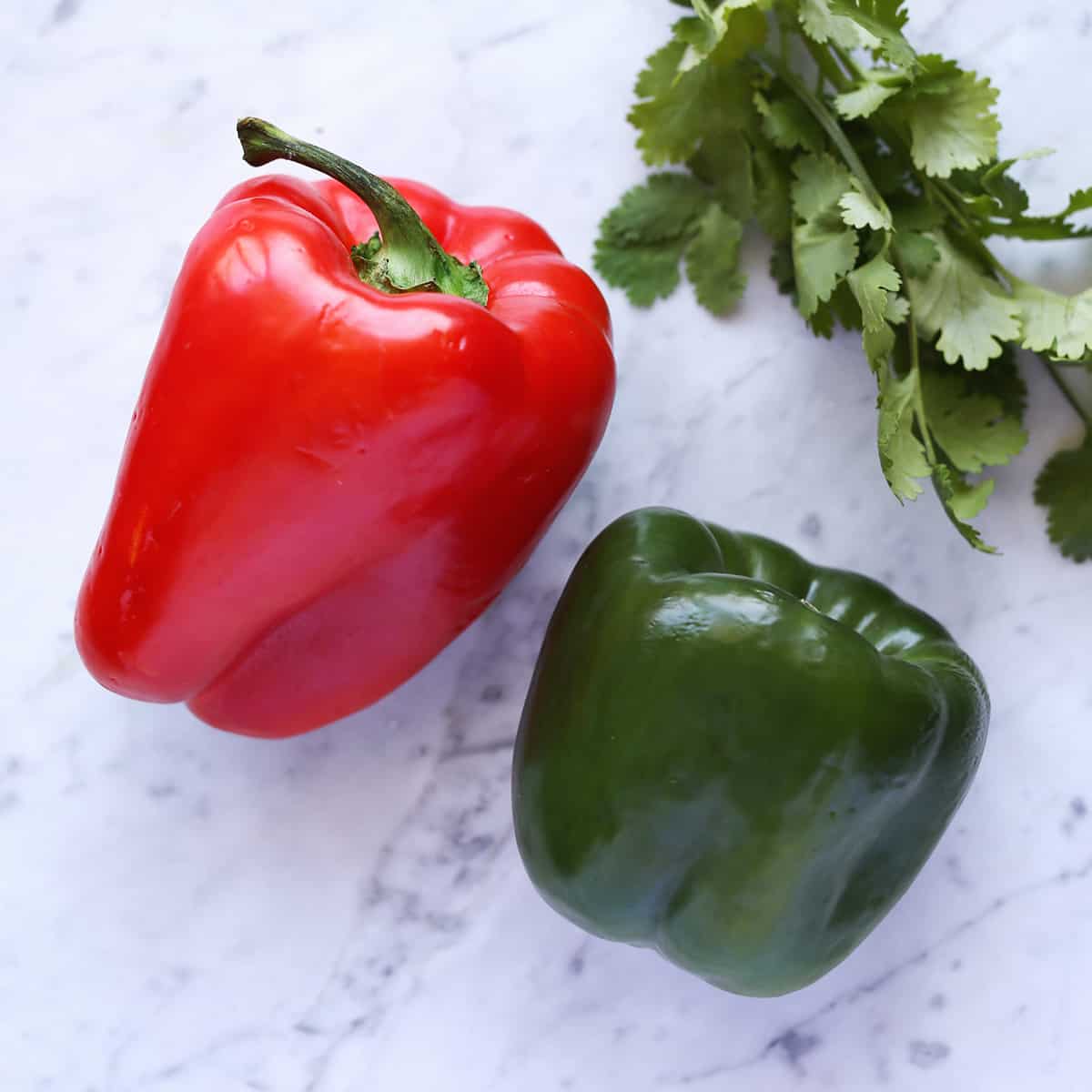If you love stuffed peppers and soup then you are going to fall in love with this stuffed pepper soup recipe! It has it all: lean protein packed with vegetables, black beans, all encased in a flavorful soup that gets topped with a little cheese and cilantro. Yum!
Serve this stuffed pepper soup with a cheese quesadilla for the full soup + grilled cheese experience.
This stuffed pepper soup recipe is made from very basic ingredients and can come together in about 30 minutes. Everyone in your family will love this soup—it’s a winner!
Related: Love soup? Read 35 Comforting Soup Recipes for more.

Stuffed Pepper Soup Ingredients:
- Ground meat – I use ground turkey but beef or chicken will work well, too.
- Onion
- Bell peppers – I like to use a red and green one for color.
- Garlic
- Black beans
- Petite diced tomatoes
- Tomato sauce
- Stock – I use chicken stock, but vegetable or beef would work well, too.
- Rice – white or brown is great, or you can substitute another grain like quinoa.

How to make Stuffed Pepper Soup:
First, brown the ground meat. While this cooks you can prep the vegetables. Once the meat is cooked, add in the onion, peppers, and garlic. Season well. Cook until the onions begin to soften.
Now, add the black beans (drain the can of juices first), diced tomatoes, tomato sauce, and chicken stock. Cook until everything is hot and warmed through. Then stir in the cooked rice.
Taste and add more salt, pepper, or spice. Top with cheese and cilantro to serve.

Tips and Substitutions:
- You can use any kind of ground meat for this recipe, but I like to use lean ground turkey. If you are using a lean (low fat content) ground meat, you may want to add a little olive oil as you’re cooking (if you notice it sticking to the pan).
- I like white rice in this soup but brown rice, quinoa, or millet would work well, too.
- If you’d like to make this stuffed pepper soup vegetarian you can substitute the ground meat for two more cans of beans—any variety you prefer.
- If you want to make this soup ahead, reserve adding in the cooked rice until you plan to serve. Although I do think you can store leftovers (with the rice added) for a day or two after eating, the rice will get mushy over time. So, if you know you won’t serve the soup until the next day, save adding the rice until then.
Serving Suggestions:

Grab this guide to see our Top 25 Recipes of all time!

Free Popular Recipe Guide
Our top 25 recipes of all time!
Get the Recipe
an easy soup made with ground meat, vegetables, and tomatoes
Instructions
-
Start cooking the rice so it will be ready when you need it.
-
Brown the ground meat. While this cooks, you can prep the vegetables.
-
Once the meat is cooked, add in the onion, peppers, and garlic. Season with cayenne and some salt and pepper. Cook until the onions begin to soften.
-
Now add the black beans (drain the can of juices first), diced tomatoes, tomato sauce, and chicken stock. Cook until everything is hot and warmed through.
-
Then stir in the cooked rice.
-
Taste and add more salt and pepper as needed.
-
Top with chopped cilantro and cheese before serving.
Notes
- You can use any kind of ground meat for this recipe, but I like to use lean ground turkey. If you are using a lean (low fat content) ground meat, you may want to add a little olive oil as you’re cooking if you notice it sticking to the pan much.
- I like white rice in this soup but brown rice, quinoa, or millet would work well, too.
- If you’d like to make this stuffed pepper soup vegetarian, you can substitute the ground meat for two more cans of beans, any variety you prefer.
- If you want to make this soup ahead, reserve adding in the cooked rice until you plan to serve. Although I do think you can store leftovers (with the rice added) for a day or two after eating, the rice will get mushy over time. So, if you know you won’t serve the soup until the next day, just save adding the rice until then.
Nutrition
Nutrition Facts
Stuffed Pepper Soup
Amount per Serving
% Daily Value*
* Percent Daily Values are based on a 2000 calorie diet.
Notice: Nutrition is auto-calculated, using Spoonacular, for your convenience. Where relevant, we recommend using your own nutrition calculations.


